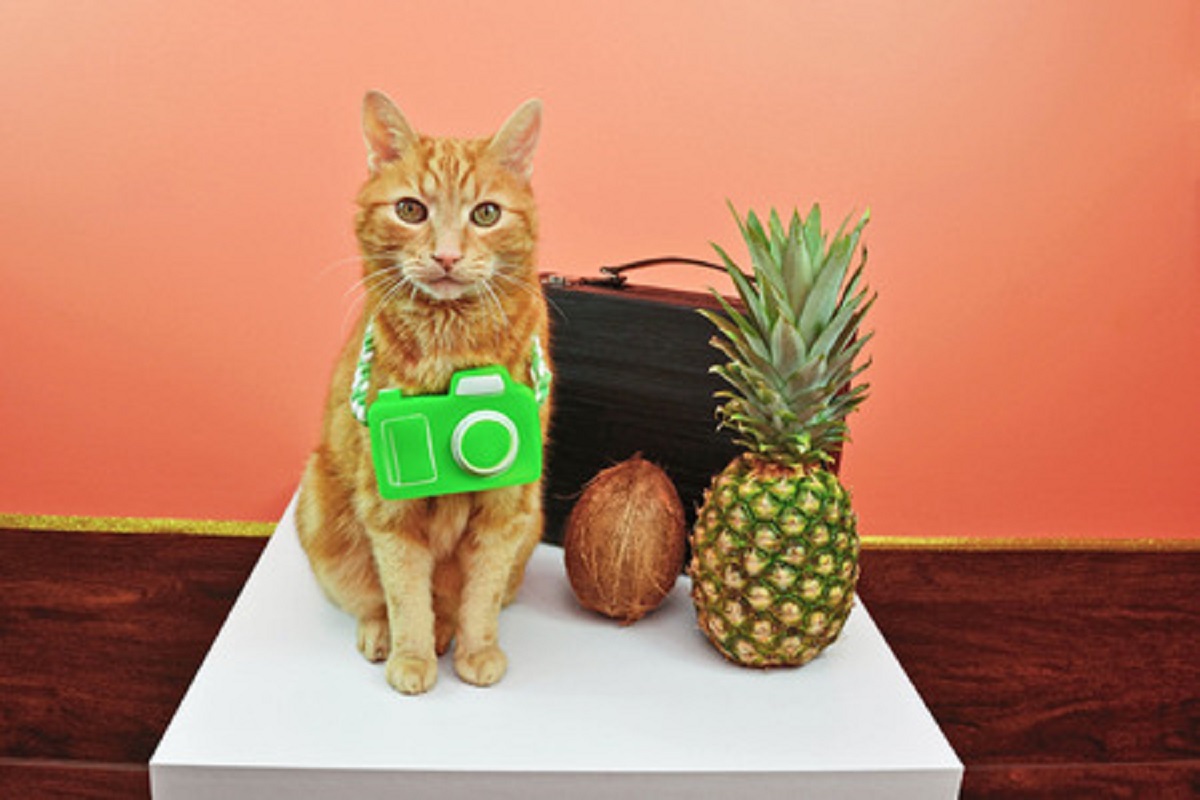Planning road trips can be stressful, and it can be even more so when your pet is involved. Most pets hate their carriers and traveling in cars, and cats are especially more timid to things like this. To make it easier on both of you, take time to teach your cat how to grow more comfortable with traveling.
Before Traveling
Consult the Veterinarian: Talk with your vet about the trip. Ask about any prevalent diseases, vaccinations, and how your cat might be affected. Airlines request a health certificate issued within a certain amount of time, so make this a requirement for your own trip.
Choose a Comfortable Carrier: Select a carrier that is well ventilated and big enough for your cat to stretch in. Avoid letting the cat out until you reach your destination (unless you have a leash). The cat could get restless if he or she is constantly in and out. Try ensuring the crate is USDA approved because any future flying trips will require it.
Slowly Introduce the Carrier: Set the carrier in your house a few days before the trip. Allow your cat time to get used to the carrier by letting him or her explore it and making it a part of play time. For motivation, give the cat treats while he or she is inside as it teaches cats to like going into the carrier. If you need to introduce it even slower, start serving meals by the carrier. Eventually, your cat will begin to associate positive experiences with it.
Map Out Locations: Search your route for emergency vet locations. Pack your cat’s information, such as tags and medical records. These are important to have before boarding an airplane, so have them while driving too. Also, plan stops at hotels that welcome pets—it can be harder to find places that accept cats. Ask about weight restrictions, fees, and whether your cat can be left unattended. This can make your journey much less stressful.
Bring Familiar Things: Fill a box with your cat’s favorite toys, snacks, or blankets, which can further encourage a positive experience. Also, packing food and water from home can lessen the chance of an upset stomach. Some pets may get a little sick after eating or drinking something unfamiliar.
While Traveling
Feed Them Beforehand: Feed your cat at least three to four hours before leaving. This allows the food time to settle and prevents him or her from throwing up on the road.
Keep Them Comfortable: Surround the inside of the carrier with familiar items. Place pillows and blankets inside that smell like home since a scent your animal recognizes is comforting.
Secure the Carrier: Make sure the carrier cannot slide forward or tumble over. Place it where your cat can see you and, if possible, secure the carrier with a seatbelt.
Allow Playtime: Continue your usual feeding schedule. Provide food and water during times your cat would normally eat and allow time to play during breaks. Transition timing of routines slowly before you leave to adapt to any time zone changes.
Don’t Let Them Roam: If you get out of the car for a length of time, don’t let the cat roam the vehicle. Leave your windows cracked about an inch to prevent him or her from sneaking out. No matter the weather, don’t leave your cat unattended too long.
Think you or someone you know is in need of Behind the Wheel Training? Training Wheels is a Mays Landing driving school specializing in teaching new teen drivers how to stay safe on the road. For more information on our lessons, please click here.
Copyright: mrscathyokeefe / 123RF Stock Photo

